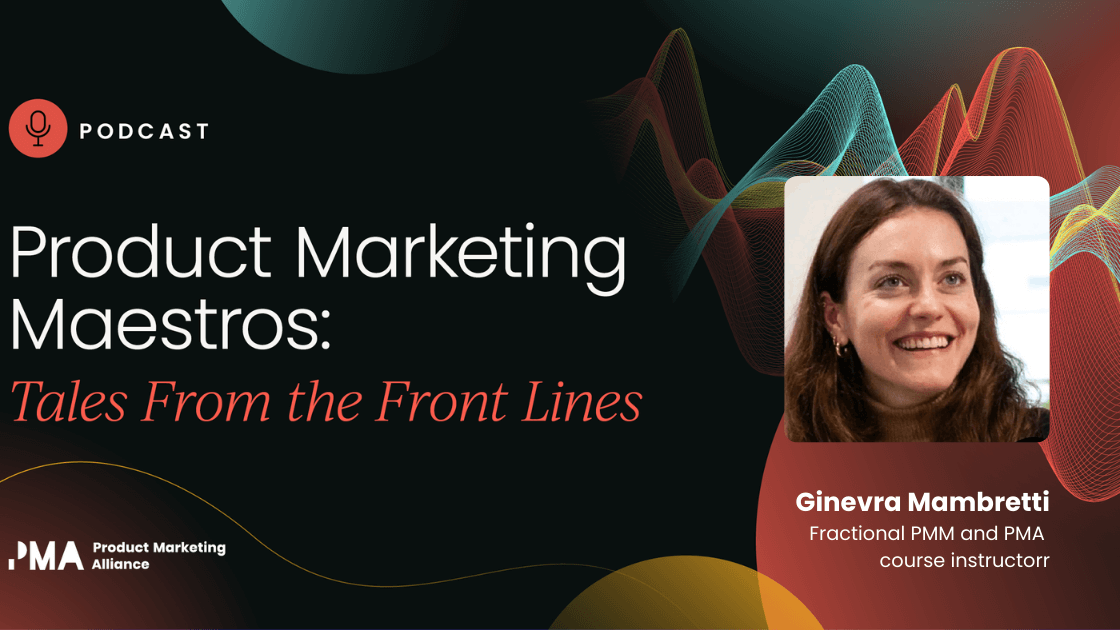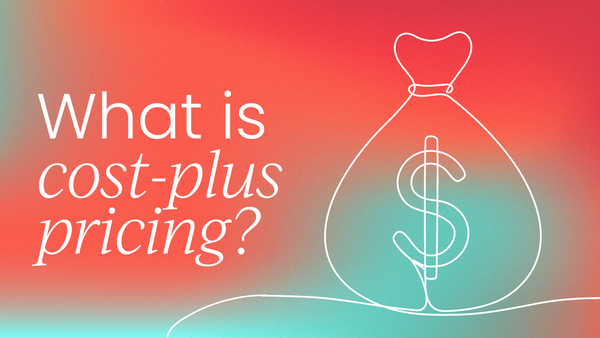The cost-plus pricing model involves determining the selling price by adding a fixed profit percentage to the total production cost.
For example, if the cost of producing a pair of trainers is $60, and the company aims for a 30% profit margin, the final price would be set at $78, generating an $18 profit per pair.
It’s a common pricing strategy but it's not suitable for every business. This article explains:
- When cost-plus pricing is appropriate
- The advantages of cost-plus pricing
- The disadvantages of cost-plus pricing
- How to determine your cost-plus price
If you’re a product manager, product marketer, or any other professional involved in determining pricing strategies, then read on to understand how and when to effectively use cost-plus pricing.

When is cost-plus pricing appropriate?
The cost-plus pricing model is commonly used for physical products, where material costs are straightforward to calculate. This makes it easier to apply, as businesses can directly add a profit margin to their clear, tangible costs.
In contrast, for SaaS products, where costs like software development and maintenance are less concrete, this approach may be more challenging.
However, if a SaaS company chooses to implement cost-plus pricing, it should consider expenses such as staff salaries, the time spent developing the software, and other operational costs.
It's important to note that pricing for SaaS based on these costs often involves a level of estimation, as the exact cost of intangible elements like development time or innovation can be harder to pinpoint.
Cost-plus pricing is most appropriate in industries with stable, identifiable costs or when businesses want to ensure predictable profit margins. It can also be useful in less competitive markets where demand is relatively inelastic.
However, as mentioned, it may not be ideal in dynamic sectors like SaaS, where value-based or market-driven pricing may align more closely with customer expectations and business growth strategies.
Advantages of cost-plus pricing
Simplicity
One of the biggest advantages of cost-plus pricing is its simplicity. It’s easy to calculate, requiring only the total cost of production and a set profit margin. This straightforward approach ensures a predictable profit margin on every sale.
Profit assurance
As long as costs are accurately calculated, this model guarantees a profit, since the selling price directly reflects the cost of production plus a markup.
Price increases justification
Communicating price hikes to customers can be challenging, but cost-plus pricing helps justify these increases. If production costs rise, the increase in the final price can be directly linked to the higher input costs, making the price adjustment easier to explain.

Disadvantages of cost-plus pricing
Ignores competitors
One major drawback is that this model doesn’t consider competitor pricing. By neglecting the broader market, you may price your product too high, making it uncompetitive, or too low, missing out on potential profit.
Lack of cost control
This approach can create a mindset where cost-efficiency is not a priority. If teams know that a fixed profit margin will be added to whatever the cost is, there’s less motivation to minimize expenses. This can lead to inflated costs, which in turn raises the final price and could reduce customer demand.
Overpriced products
If your costs are too high, your final price may become unreasonably high, deterring customers. Cost-plus pricing doesn’t consider what customers are willing to pay or the perceived value of your product, which could result in pricing yourself out of the market.
Limited customer focus
Cost-plus pricing is primarily company-centric, focusing on covering costs and ensuring profits rather than aligning with customer value or demand. This can lead to challenging sales conversations, as the pricing may not resonate with customers or be easily justified by sales teams. In such cases, heavy discounting may be needed, defeating the purpose of the model.
Uncontrollable cost increases
While price increases may be justified when costs rise, you have no control over how frequently or drastically these costs will escalate. Customers might become frustrated if prices are raised too often. On the flip side, failing to adjust prices in line with rising costs can eat into profit margins.

Overlooked growth costs
The model also doesn’t account for future costs associated with business growth, such as marketing, sales, and new hires. These additional expenses can impact profitability if not properly factored in.
How is price determined using cost-plus pricing?
Step one: Calculate the total cost
Imagine you're assembling a complex jigsaw puzzle. Each piece represents a cost your business incurs. To see the full picture, you need to fit together two types of pieces:
- Fixed costs: These are your steady companions, unchanging regardless of how much you produce. Think of them as the cornerstone of your business – rent, salaries, and other consistent overheads.
- Variable costs: These are the chameleons of your cost structure, changing their colors (or amounts) based on your production volume. Raw materials and labor hours fall into this category.
The magic formula? Total cost = fixed costs + variable costs
Step two: Discover the unit cost
Now that you've solved the total cost puzzle, it's time to zoom in on a single piece of your product. How much does it cost to bring just one unit to life? Here's where we divide and conquer:
Unit cost = total cost / number of units
This figure is your compass, guiding you toward profitability by revealing the bare minimum you need to charge to break even.
Step 3: Calculate the markup and selling prices
Here's where strategy meets arithmetic. The markup is your ticket to profitability – a carefully calculated percentage added to your unit cost. It's not just about covering costs; it's about fueling growth and rewarding innovation.
- Determine your markup percentage based on industry standards, competition, and your business goals.
- Calculate the markup price: markup price = (unit cost x markup percentage)
- Finally, reveal your strategic selling price: selling price = unit cost + markup price
This final figure declares your product's value, covers your costs, and carves out your profit margin in one fell swoop.
By mastering these steps, you're not just setting a price – you're crafting a pricing strategy that balances profitability with market competitiveness.
Wanna learn more?
Pricing strategies have the power to make or break your product – set the bar too high, and you’ll price your customers out of the market, set your price point too low, and you’re running the risk of undermining the quality of your product.
Our Pricing Certified: Masters course has been designed so you can delve into the intricacies of pricing, and get the essential knowledge and tools needed to price your products competitively.
This course will help you to confidently:
💰 Understand pricing strategies.
💰 Be able to change your pricing confidently.
💰 Understand how to conduct a pricing analysis.
💰 Identify how pricing strategies vary, depending on the industry.
💰 Know how to segment your pricing.
💰 Understand how discounting works.
So, what are you waiting for?


















 Follow us on LinkedIn
Follow us on LinkedIn




.svg?v=d4ba8e68cb)